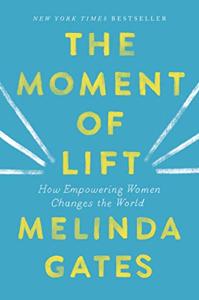
Want to learn the ideas in The Moment Of Lift better than ever? Read the world’s #1 book summary of The Moment Of Lift by Melinda Gates here.
Read a brief 1-Page Summary or watch video summaries curated by our expert team. Note: this book guide is not affiliated with or endorsed by the publisher or author, and we always encourage you to purchase and read the full book.
Video Summaries of The Moment Of Lift
We’ve scoured the Internet for the very best videos on The Moment Of Lift, from high-quality videos summaries to interviews or commentary by Melinda Gates.
1-Page Summary of The Moment Of Lift
Overview
Gender equality has become a major issue in our society. The #MeToo movement brought to light the problems women face on a regular basis, such as sexual harassment and unequal pay. Now these problems are being discussed more than ever before.
While there has been a lot of discussion about women’s rights in developed countries, we need to pay more attention to the plight of women living in poverty. It is even harder for them because they have less access to resources and opportunities than men do.
The author of this book has been working for a charitable foundation and discovered that women still face many challenges. The author is going to share her findings with the reader, as well as some challenges that she faced while working in this capacity.
In this article, we’ll discuss how contraceptives have benefited women in many ways. We’ll also learn why hundreds of millions of women don’t go to secondary school and how empowering female farmers could lift 150 million people out of food poverty.
Big Idea #1: Access to family planning lies at the heart of women’s empowerment.
After founding the Bill & Melinda Gates Foundation in 2000, the author and her husband made it their mission to provide free vaccinations for children in developing countries.
During a visit to one of the foundation’s vaccination drives in Malawi, Africa, the author had many conversations with women who wanted their children vaccinated. However, there was another concern that came up during those conversations: contraception. Many women complained that even if their children were vaccinated, what would it matter? If impoverished women were destined to continue having more and more children, how would they be able to provide for their families?
There is a correlation between women’s health and the availability of contraceptives. For example, in 2012 there were 260 million women using contraceptives in 69 least wealthy nations, but more than 200 million wanted to use them but couldn’t get access to them. The benefits are clear: for instance, an ongoing Bangladeshi study found that mothers who had access to contraception were healthier and their children were better off as well.
Women and families benefit from contraception because it allows them to plan when they want to have children. They can also better raise the children that they already have, which will lead to a more prosperous generation of humans.
Unintended pregnancies have decreased in the United States because of legislation that allows women access to contraceptives. This is even true in countries where contraception isn’t free, as seen with all over the world.
The current government is trying to undo the progress that has been made in reducing teen pregnancy and promoting family planning. They are also cutting funding for organizations that provide contraception and sex education, despite the fact that this will only increase unwanted pregnancies.
Big Idea #2: Understanding the relationship between poverty and reproductive health is key to empowering women.
Since 1990, the vaccination drive has cut childhood deaths in half. However, infant mortality rates have not improved much since then. 3 million children die every year before their first birthday, with most of them dying in remote areas where hospitals are far away and medical professionals are scarce.
The author and her husband wanted to help reduce infant mortality in the world, so they partnered with an Indian team that was training community health workers. They sent them to work in remote villages like Shivgarh, which is one of India’s poorest states and has 300,000 newborn deaths every year.






